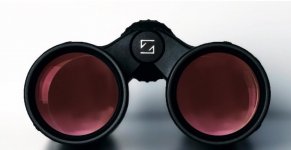The second digit in the product designation indicates the diameter of the objective lens (that is the lens at the opposite end of the binoculars to the eyepieces) in millimeters. For example, 8 x 56 binoculars have an aperture of 56 mm. The higher this value the more light enters the binoculars. On the flip side, a larger lens diameter also means more weight. However, in recent years, the use of state-of-the-art housing materials and thinner lens elements has resulted in a noticeable reduction in weight.
Unfortunately, on lower-quality binoculars the effective aperture, i.e. the effective entrance pupil, is occasionally much smaller than the stated diameter. This may be due to the small dimensions of the prisms, lens elements, or other components that obstruct the flow of light inside the binoculars. For example, if only 3 mm of the incidental light is cut all around the outer edge of an 8 x 56 model, the effective entrance pupil is 50 mm only. These are now effectively only “8 x 50” binoculars therefore, and have about a 20% smaller light transmission than expected and 20% less light reaches the eye.
Unfortunately, on lower-quality binoculars the effective aperture, i.e. the effective entrance pupil, is occasionally much smaller than the stated diameter. This may be due to the small dimensions of the prisms, lens elements, or other components that obstruct the flow of light inside the binoculars. For example, if only 3 mm of the incidental light is cut all around the outer edge of an 8 x 56 model, the effective entrance pupil is 50 mm only. These are now effectively only “8 x 50” binoculars therefore, and have about a 20% smaller light transmission than expected and 20% less light reaches the eye.




